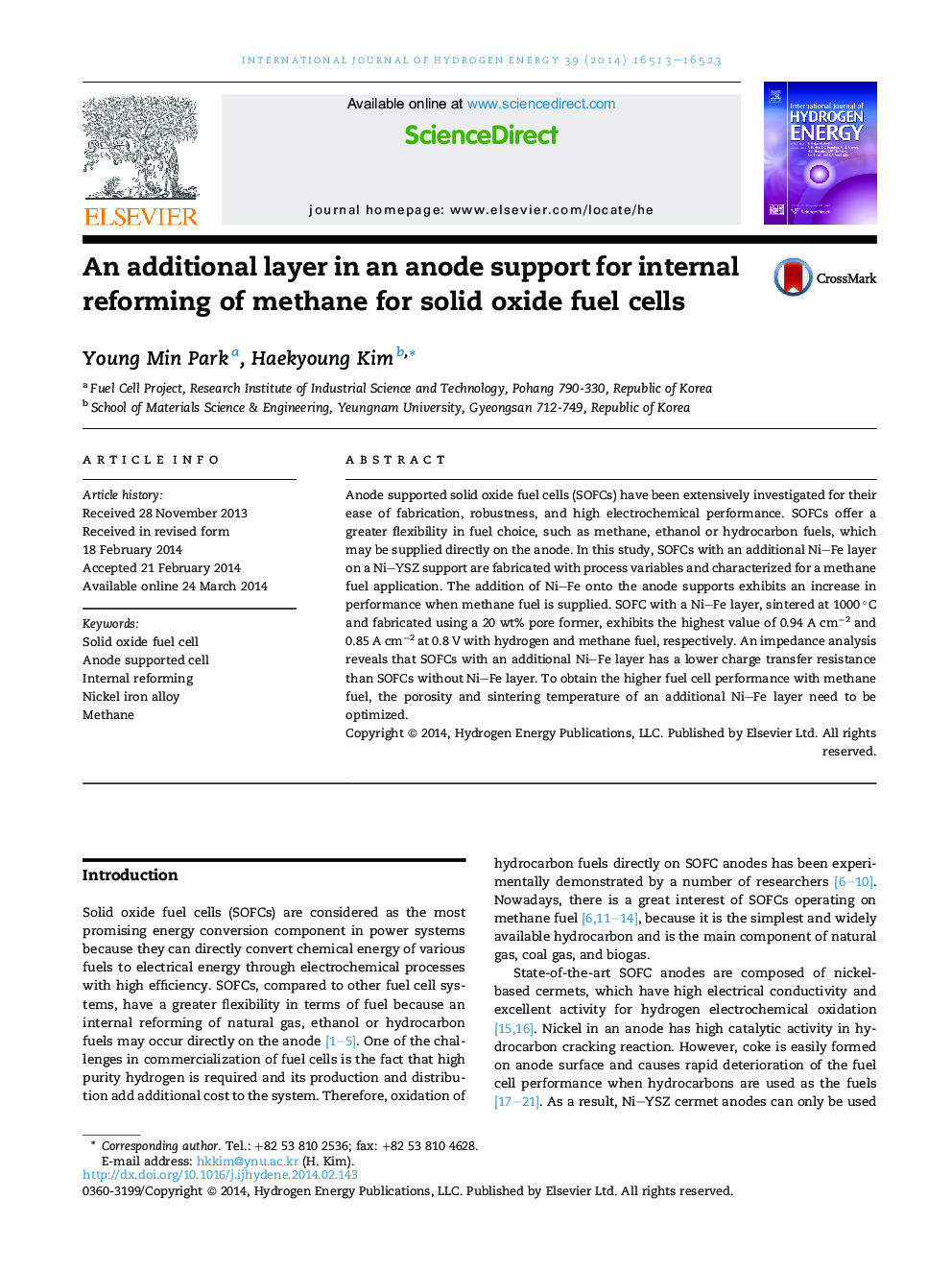| Article ID | Journal | Published Year | Pages | File Type |
|---|---|---|---|---|
| 1280990 | International Journal of Hydrogen Energy | 2014 | 11 Pages |
•An additional Ni–Fe layer on a Ni–YSZ support was studied on methane internal reforming.•SOFC with a Ni–Fe showed lower charge transfer resistance for methane fuel.•The temperature for sintering affected the fuel cell performances.•The morphologies of Ni–Fe layer can be controlled for higher performances.
Anode supported solid oxide fuel cells (SOFCs) have been extensively investigated for their ease of fabrication, robustness, and high electrochemical performance. SOFCs offer a greater flexibility in fuel choice, such as methane, ethanol or hydrocarbon fuels, which may be supplied directly on the anode. In this study, SOFCs with an additional Ni–Fe layer on a Ni–YSZ support are fabricated with process variables and characterized for a methane fuel application. The addition of Ni–Fe onto the anode supports exhibits an increase in performance when methane fuel is supplied. SOFC with a Ni–Fe layer, sintered at 1000 °C and fabricated using a 20 wt% pore former, exhibits the highest value of 0.94 A cm−2 and 0.85 A cm−2 at 0.8 V with hydrogen and methane fuel, respectively. An impedance analysis reveals that SOFCs with an additional Ni–Fe layer has a lower charge transfer resistance than SOFCs without Ni–Fe layer. To obtain the higher fuel cell performance with methane fuel, the porosity and sintering temperature of an additional Ni–Fe layer need to be optimized.
